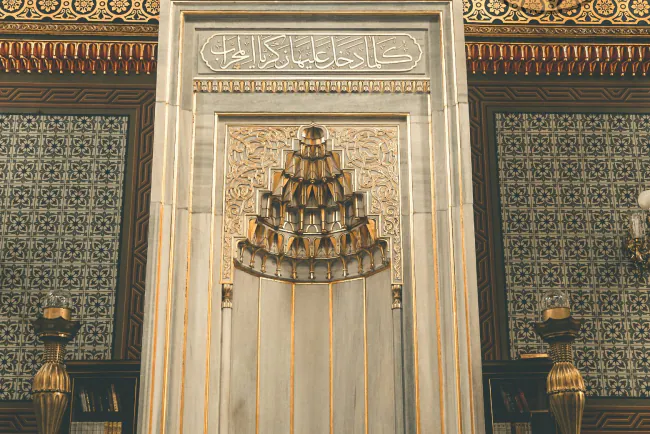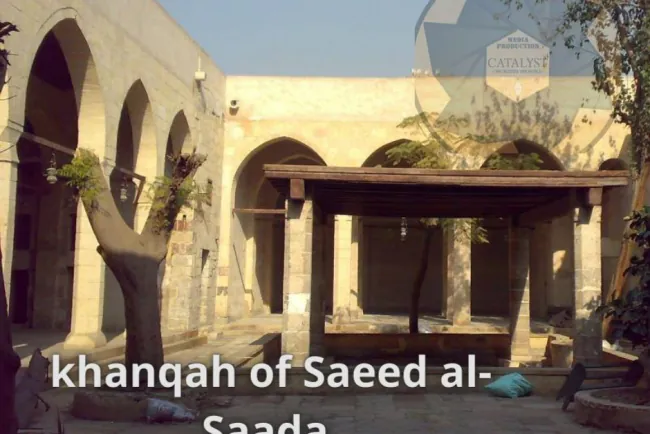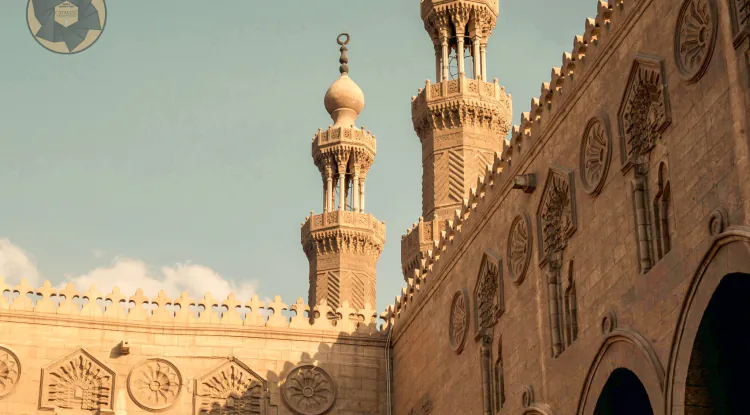Bashtak Palace on Al-Muizz Street (the jewel of civil architecture)
It was established by Prince Saif al-Din Bashtak al-Nasiri, one of the princes of al-Nassir Muhammad ibn Qalawun, who was killed by a plot by Prince Quson during The reign of Sultan Al-Ashraf Alaeddin Kjak. The establishment of this palace dates back to the year 1339 AD. It has been exposed to some cracks over time, reaching their peak after the earthquake in 1992, but it was restored in cooperation with the German Archaeological Institute.
What is a palace in the Islamic era?
It was the residence of the caliphs and sultans in the Islamic era. It differed in its layout from the rest of the buildings in that it was a building with a large courtyard with a main gate. Surrounding this courtyard were the buildings surrounding the palace, which included the services and departments supervised by the Caliph.
Given that the palaces were a place of residence, they collected all the elements of entertainment and decoration that were not found in religious buildings, such as drinking holes, stairs, metal and pottery utensils, fountains, etc. Palaces are considered the least of the remaining religious buildings in terms of number, due to their frequent use and lack of care. Each caliph was interested in building his palace. Or his own palaces, leaving the palaces of the previous caliphs.
Bashtak Palace:
The Bashtak Palace of al-Mu'izz Lidin Allah al-Fatimi is located and it was part of the Great Eastern Palace, the palace of the Fatimid ruler until it was owned by the Commander-in-Chief, Prince Badr al-Din Bektash al-Fakhri.
The location of the palace was several mosques. When Prince Bektash died, the Mamluk prince Bashtak bought a piece of land from Sultan Muhammad bin Qalawun that was inside the palace, and he annexed a number of buildings and mosques to it, demolished them, and built the palace in their place in 738 AH.
Bashtak Palace was one of the greatest buildings in the Mamluk era. It was forty cubits high, and water flowed at the top. It had windows overlooking the Nile, and the Nile had a branch that reached there at that time.
Bashtak did not live in the palace for long, but rather sold it to the wife of a man called Baktamar al-Saqi, and it was passed on to her heirs until Sultan Hassan bin al-Nathir Muhammad bin Qalawun took it, and the palace was traded until it reached the endowments of Prince Minister Field Marshal Jamal al-Din al-Astadar.
There is a recurring story that says that when Prince Bashtak wanted to build this palace, he usurped the buildings of some poor people in that area and demolished them in order to build his palace. Because the reward was of the type of work, when he lived in Bashtak, he began to have constant nightmares, so he did not stay there long and sold it for much less than the cost he spent on it.
What's Your Reaction?





















